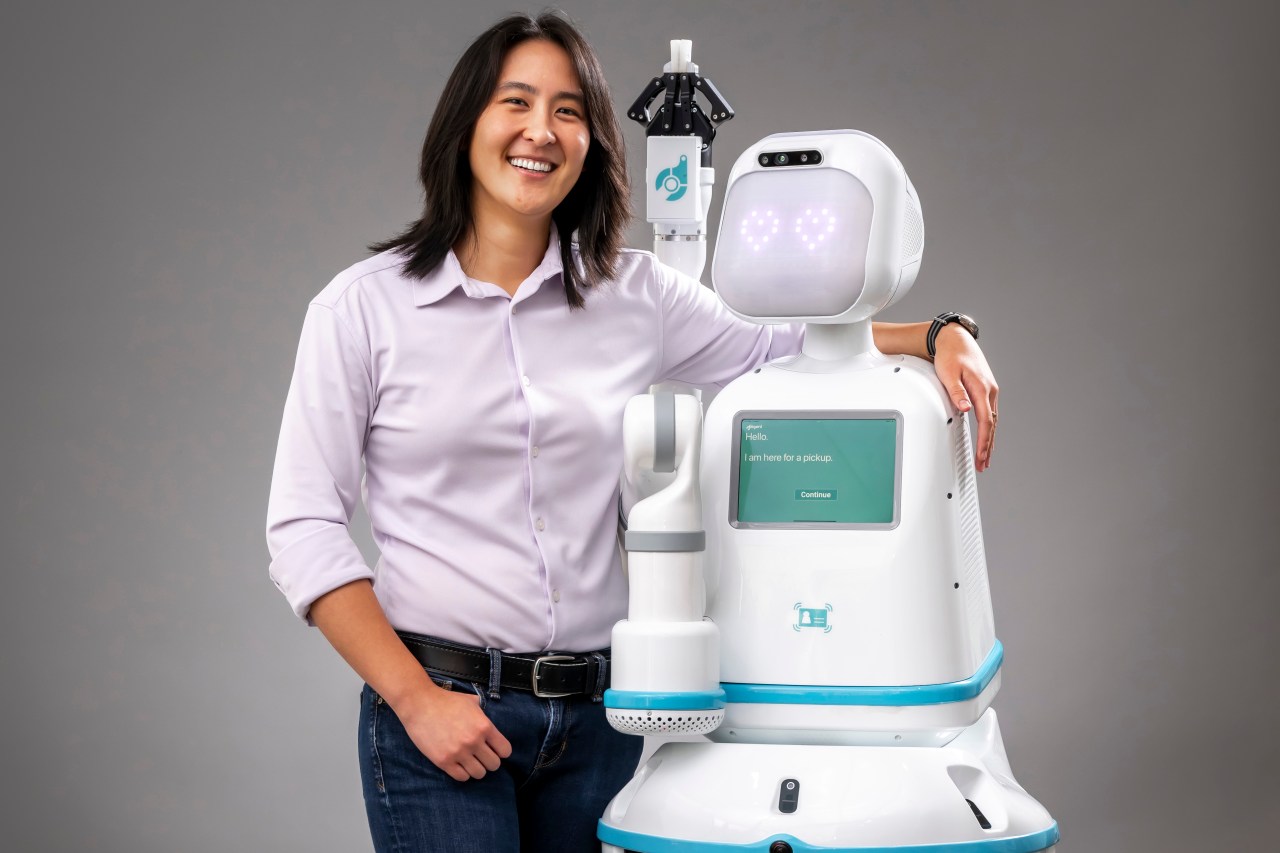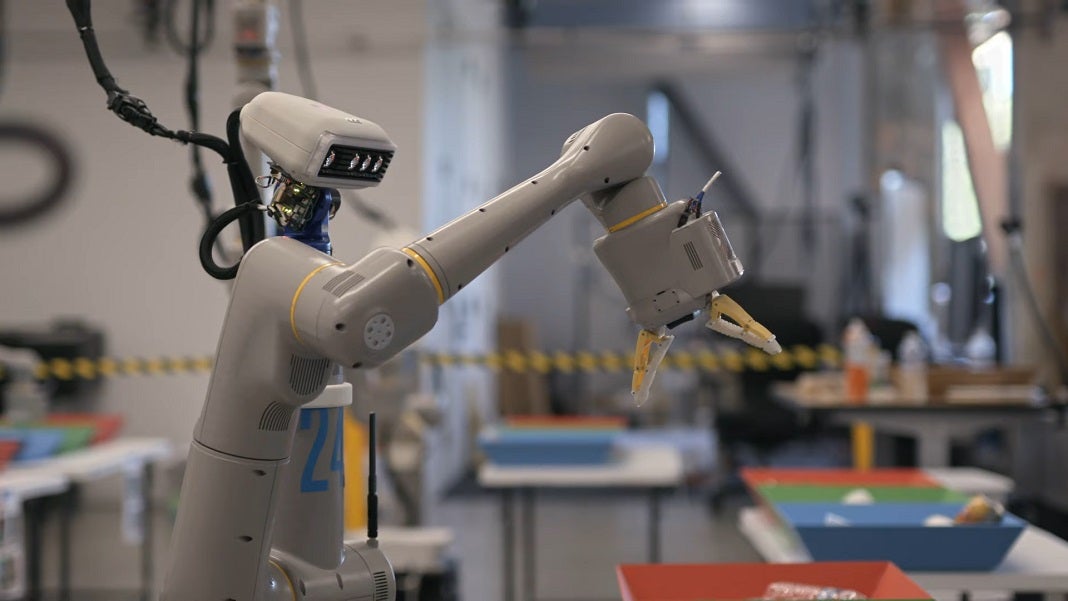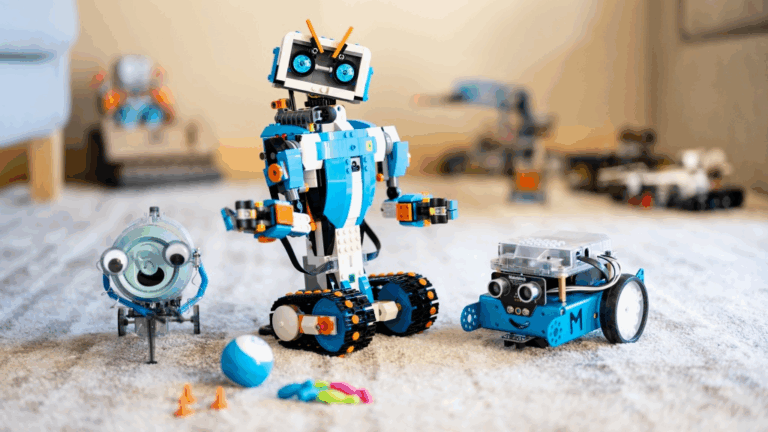The Core of Modern Robotics

At its heart, modern robotics is an interdisciplinary field that combines engineering, computer science, artificial intelligence, and more, to design, build, operate, and apply robots. Understanding the key components and classifications of these intelligent machines is crucial to grasping their widespread impact.
A. Robot Anatomy and Components: Every robot, regardless of its complexity, comprises several fundamental components that enable it to perceive, think, and act:
* Actuators: These are the “muscles” of a robot, converting energy into motion. Common types include electric motors (servos, steppers), pneumatic (air-driven) cylinders, and hydraulic (fluid-driven) systems, each chosen for specific power, speed, and precision requirements.
* Sensors: These are the “senses” of a robot, allowing it to perceive its environment. This includes vision sensors (cameras), touch sensors (tactile feedback), proximity sensors (detecting objects without contact), force sensors (measuring pressure), and navigation sensors (GPS, lidar, sonar) for mapping and localization.
* Controllers: The “brain” of the robot, often a micro-controller or computer, that processes sensor data, executes programs, and sends commands to actuators. Modern controllers incorporate complex algorithms for path planning, object recognition, and decision-making.
* End Effectors: These are the “hands” or “tools” of a robot, attached to the end of its arm to perform specific tasks. Examples include grippers for grasping, welding torches, paint sprayers, surgical instruments, or even specialized tools for exploration.
* Power Source: Robots require power, typically from batteries (for mobile robots), electrical outlets (for industrial robots), or sometimes even hydraulic power units. Energy efficiency is a critical design consideration, especially for autonomous and long-duration operations.
B. Robot Classification by Function and Mobility: Robots can be categorized in various ways, reflecting their diverse applications and design principles:
* Industrial Robots: These are typically stationary or mobile manipulators used in manufacturing for tasks like assembly, welding, painting, and material handling. They are designed for high precision, repeatability, and endurance in structured environments.
* Service Robots: Designed to assist humans in specific tasks, these can be further divided into:
* Professional Service Robots: Used in commercial or industrial settings, such as surgical robots, agricultural robots, warehouse robots (AGVs, AMRs), and cleaning robots.
* Personal/Domestic Service Robots: Found in homes, including robotic vacuum cleaners, lawnmowers, and personal assistant robots.
* Mobile Robots: Robots capable of movement in their environment. This includes wheeled robots, tracked robots, legged robots (bipeds, quadrupeds), aerial robots (drones), and underwater robots. Their mobility allows them to perform tasks in dynamic or expansive areas.
* Humanoid Robots: Designed to resemble the human body, often with bipedal locomotion, arms, and a head, enabling them to interact with human-centric environments and tools more naturally. Examples include Atlas (Boston Dynamics) and Sophia (Hanson Robotics).
* Collaborative Robots (Cobots): A special class of robots designed to work safely alongside humans in shared workspaces, often without physical barriers. They are equipped with advanced sensors and safety features that allow them to detect and respond to human presence, making human-robot collaboration more efficient.
C. The Role of Artificial Intelligence (AI) in Robotics: AI is the driving force behind the intelligence and autonomy of modern robots.
* Machine Learning (ML): Enables robots to learn from data and experience, improving their performance over time without explicit programming. This is crucial for tasks like object recognition, predictive maintenance, and adaptive control.
* Computer Vision: Allows robots to “see” and interpret visual information from their environment, enabling tasks like navigation, object manipulation, quality control, and facial recognition.
* Natural Language Processing (NLP): Empowers robots to understand and respond to human language, facilitating more natural human-robot interaction in service and assistant roles.
* Reinforcement Learning: Robots learn optimal behaviors through trial and error, by interacting with their environment and receiving rewards for desired actions. This is particularly effective for complex manipulation tasks and navigation in unstructured environments.
Robotics’ Transformative Impact Across Industries
The widespread integration of robots is fundamentally changing how industries operate, boosting efficiency, enhancing safety, and opening up new possibilities for innovation.
1. Manufacturing
Robotics has been a cornerstone of modern manufacturing for decades, and its evolution continues to drive unparalleled levels of efficiency, precision, and flexibility.
A. Assembly Line Automation: Industrial robots are workhorses on assembly lines, performing repetitive tasks with extreme precision and speed. This includes spot welding in automotive factories, precise component placement in electronics manufacturing, and intricate assembly of complex products. Automation reduces human error, increases throughput, and ensures consistent quality.
B. Material Handling and Logistics: Automated Guided Vehicles (AGVs) and Autonomous Mobile Robots (AMRs) are transforming warehouses and factories. They transport raw materials, work-in-progress, and finished goods, optimizing inventory management and accelerating logistics operations. These robots can navigate complex environments, avoid obstacles, and seamlessly integrate with existing infrastructure.
C. Quality Control and Inspection: Vision-guided robots equipped with high-resolution cameras and advanced algorithms perform automated quality inspections, detecting minuscule defects that might be missed by the human eye. This ensures higher product quality, reduces waste, and minimizes recall risks across industries from automotive to pharmaceuticals.
D. Precision Machining and Fabrication: Robots are increasingly used for tasks requiring extreme precision, such as drilling, cutting, polishing, and additive manufacturing (3D printing). Their ability to follow complex paths with high accuracy makes them invaluable for producing intricate components for aerospace, medical devices, and other high-tech sectors.
E. Collaborative Robotics (Cobots): Cobots are revolutionizing human-robot interaction in manufacturing. Designed to work safely alongside human operators, they assist with tasks that require strength, endurance, or repetitive motion, freeing human workers for more complex, creative, or supervisory roles. This hybrid approach boosts productivity while retaining human dexterity and problem-solving skills.
2. Healthcare
Robotics is making significant strides in healthcare, improving patient outcomes, assisting medical professionals, and enhancing operational efficiency.
A. Surgical Robots: Systems like the da Vinci Surgical System allow surgeons to perform complex procedures with enhanced precision, dexterity, and visualization through minimally invasive techniques. This leads to smaller incisions, reduced blood loss, faster recovery times, and decreased post-operative pain for patients. Future advancements promise even greater autonomy and intraoperative guidance.
B. Rehabilitation and Assistive Robots: Robots are playing a crucial role in physical therapy, helping patients regain mobility after injuries or strokes. Exoskeletons assist individuals with paralysis or mobility impairments, enabling them to walk or perform daily tasks. Robotic prosthetics are becoming more sophisticated, offering greater functionality and a more natural feel.
C. Hospital Logistics and Pharmacy Automation: Mobile robots transport medications, lab samples, linens, and food throughout hospitals, reducing the workload on staff and ensuring timely delivery. Robotic dispensing systems automate pharmacy operations, reducing medication errors and improving inventory management.
D. Telepresence Robots: These robots allow doctors to consult with patients remotely, particularly valuable in rural areas or during outbreaks. They can move around, display the doctor’s face, and facilitate communication, bridging geographical gaps in healthcare access.
E. Disinfection and Cleaning Robots: Especially critical in post-pandemic healthcare, autonomous disinfection robots use UV-C light or specialized sprays to sterilize hospital rooms and equipment, reducing the spread of infections and enhancing hygiene protocols.
3. Logistics and Supply Chain
Robots are the backbone of modern logistics, enabling faster, more accurate, and more efficient movement of goods from warehouses to doorsteps.
A. Warehouse Automation: Fully automated warehouses utilize robots for picking, packing, sorting, and shelving. Kitting robots assemble orders, while intelligent conveyor systems and robotic arms work in concert to streamline the entire fulfillment process, significantly reducing human labor and increasing throughput, especially for e-commerce.
B. Last-Mile Delivery: Autonomous delivery robots and drones are being tested and deployed for last-mile delivery, especially in urban and suburban areas. They offer faster delivery times, reduce traffic congestion, and lower carbon emissions, addressing the growing demand for rapid e-commerce fulfillment.
C. Automated Port Operations: Robots are automating container handling at ports, efficiently loading and unloading cargo ships, optimizing stacking in container yards, and moving containers to and from transport vehicles. This increases port capacity, speeds up global trade, and enhances safety for dockworkers.
D. Inventory Management: Robots equipped with advanced sensors and AI can autonomously scan warehouse shelves, track inventory levels in real-time, and identify misplaced items. This improves inventory accuracy, reduces stockouts, and optimizes warehouse space utilization.
E. Robotic Sorting Centers: In large distribution centers, robotic arms and high-speed conveyor systems rapidly sort packages by destination, size, and type, accelerating the flow of goods and increasing sorting accuracy, which is crucial for courier services and postal systems.
4. Agriculture
Robotics is transforming agriculture, addressing labor shortages, optimizing resource use, and promoting more sustainable farming practices.
A. Automated Planting and Harvesting: “Agribots” can precisely plant seeds, monitor crop growth, and selectively harvest fruits and vegetables. This reduces manual labor, minimizes crop damage, and ensures optimal harvesting times, especially for delicate produce.
B. Precision Spraying and Weeding: Robots equipped with computer vision can identify weeds and apply herbicides or pesticides with extreme precision, targeting only the affected plants. This drastically reduces the overall use of chemicals, minimizing environmental impact and improving crop health.
C. Crop Monitoring and Data Collection: Drones and ground robots equipped with various sensors (hyperspectral, thermal, multispectral) collect vast amounts of data on crop health, soil conditions, and irrigation needs. This data feeds into AI models, providing farmers with actionable insights for optimizing yields and resource allocation.
D. Livestock Management: Robots are assisting in dairy farming (automated milking systems), monitoring animal health (wearable sensors), and even guiding livestock, improving animal welfare and farm efficiency.
E. Autonomous Tractors and Farm Vehicles: Self-driving tractors and other farm machinery can perform tasks like plowing, seeding, and cultivating with greater efficiency and less human oversight, operating around the clock during peak seasons.
5. Everyday Life and Smart Homes
Robots are increasingly making their way into our homes and public spaces, offering convenience, companionship, and assistance.
A. Robotic Vacuum Cleaners and Lawn Mowers: Devices like Roomba and robotic lawnmowers have become common, autonomously cleaning floors and maintaining yards, freeing up human time and effort.
B. Smart Home Assistants: While not physical robots, voice-activated AI assistants (like Alexa and Google Assistant) control smart home devices, provide information, and manage schedules, acting as central command units for connected living. Future iterations may involve more physically mobile robotic assistants.
C. Companionship Robots: For elderly individuals or those living alone, companion robots (e.g., therapeutic robots like Paro the seal) offer social interaction, reduce feelings of loneliness, and can provide reminders for medication or appointments.
D. Educational Robots: Robots are used in classrooms to teach coding, STEM concepts, and even social skills. They provide engaging, hands-on learning experiences for students of all ages.
E. Public Service and Hospitality Robots: Robots are greeting guests in hotels, guiding visitors in airports, serving food in restaurants, and even cleaning public spaces, enhancing customer experience and operational efficiency in the service industry.
Challenges and Ethical Considerations in Robotics

As robotics continues its rapid advancement, it brings forth a complex array of challenges and ethical considerations that demand careful attention and proactive solutions.
1. Job Displacement and Economic Impact:
The most immediate concern is the potential for widespread job displacement as robots take over tasks previously performed by humans.
A. Automation of Repetitive Tasks: Robots excel at repetitive, manual, and predictable tasks, which are often found in manufacturing, logistics, and administrative roles. This could lead to job losses in these sectors, particularly for low-skilled workers.
B. Need for Reskilling and Upskilling: To mitigate displacement, there’s a critical need for massive investment in education and training programs to reskill the workforce for new jobs that involve interacting with, maintaining, or supervising robots.
C. Economic Inequality: If the benefits of automation are not widely distributed, it could exacerbate economic inequality, leading to social unrest. Policies like universal basic income (UBI) are often discussed as potential solutions.
2. Safety and Reliability:
Ensuring the safe and reliable operation of robots, especially those interacting with humans, is paramount.
A. Accidents and Malfunctions: Even with advanced safety features, robotic systems can malfunction, leading to accidents. Strict safety standards, robust testing, and failsafe mechanisms are essential, particularly for cobots and autonomous vehicles.
B. Cybersecurity Vulnerabilities: As robots become more connected and autonomous, they become potential targets for cyberattacks. Hacked robots could be repurposed for malicious activities, compromise data, or cause physical harm.
C. Dependence on Technology: Over-reliance on robotic systems could create vulnerabilities if these systems fail or are compromised, impacting critical infrastructure or daily services.
3. Ethical and Societal Concerns:
The increasing autonomy and intelligence of robots raise profound ethical questions.
A. Accountability and Responsibility: When an autonomous robot makes a mistake or causes harm (e.g., an autonomous vehicle accident, a surgical robot error), determining who is accountable (developer, operator, robot itself?) becomes complex.
B. Bias in AI/Robotics: If robots are trained on biased data, they can perpetuate and amplify societal prejudices, leading to discriminatory outcomes in areas like hiring, policing, or social interaction.
C. Privacy Concerns: Robots equipped with cameras, microphones, and other sensors collect vast amounts of data about their environment and the people within it, raising significant privacy concerns about data collection, storage, and usage.
D. Human-Robot Interaction and Social Impact: The increasing integration of robots into social roles (e.g., companion robots, elderly care robots) raises questions about the nature of human relationships, emotional dependency, and potential dehumanization.
E. Autonomous Weapons Systems (Killer Robots): The development of fully autonomous weapons that can select and engage targets without human intervention is a major ethical debate, with many organizations calling for a ban.
4. Regulatory and Legal Frameworks:
Existing laws and regulations often struggle to keep pace with rapid advancements in robotics.
A. Lack of Clear Legal Precedent: Many aspects of robotic operation, liability, and rights (e.g., property rights for autonomous vehicles) lack clear legal precedents.
B. International Harmonization: Differing national regulations for robotics can hinder international development and deployment, requiring global efforts for standardization.
C. Data Governance: Establishing clear rules for how robotic systems collect, store, share, and protect data is crucial for addressing privacy concerns and fostering trust.
Conclusion
The robotics revolution is not merely a technological trend; it’s a profound societal transformation that’s already reshaping every facet of our daily lives. From the efficient automation of manufacturing plants and logistics hubs to the precision of surgical interventions and the convenience of smart homes, robots are increasingly indispensable. They are enhancing productivity, improving safety, and enabling breakthroughs previously unimaginable.
However, this rapid advancement brings with it significant challenges and ethical dilemmas. The potential for job displacement, the critical need for safety and reliability, and complex questions of accountability and bias in autonomous systems demand our immediate and sustained attention. Navigating this new era requires proactive measures, including massive investments in education and reskilling, the development of robust regulatory frameworks, and a continuous dialogue about the ethical implications of increasingly intelligent machines.
The future of robotics promises even more astonishing advancements, from hyper-personalized assistants and swarm intelligence to exploration in the most extreme environments. By embracing innovation responsibly, fostering interdisciplinary collaboration, and prioritizing human well-being, we can harness the immense power of robotics to build a more efficient, safe, and prosperous world. The robotic future isn’t just arriving; it’s actively being built by us, and our collective choices today will determine its ultimate impact.




